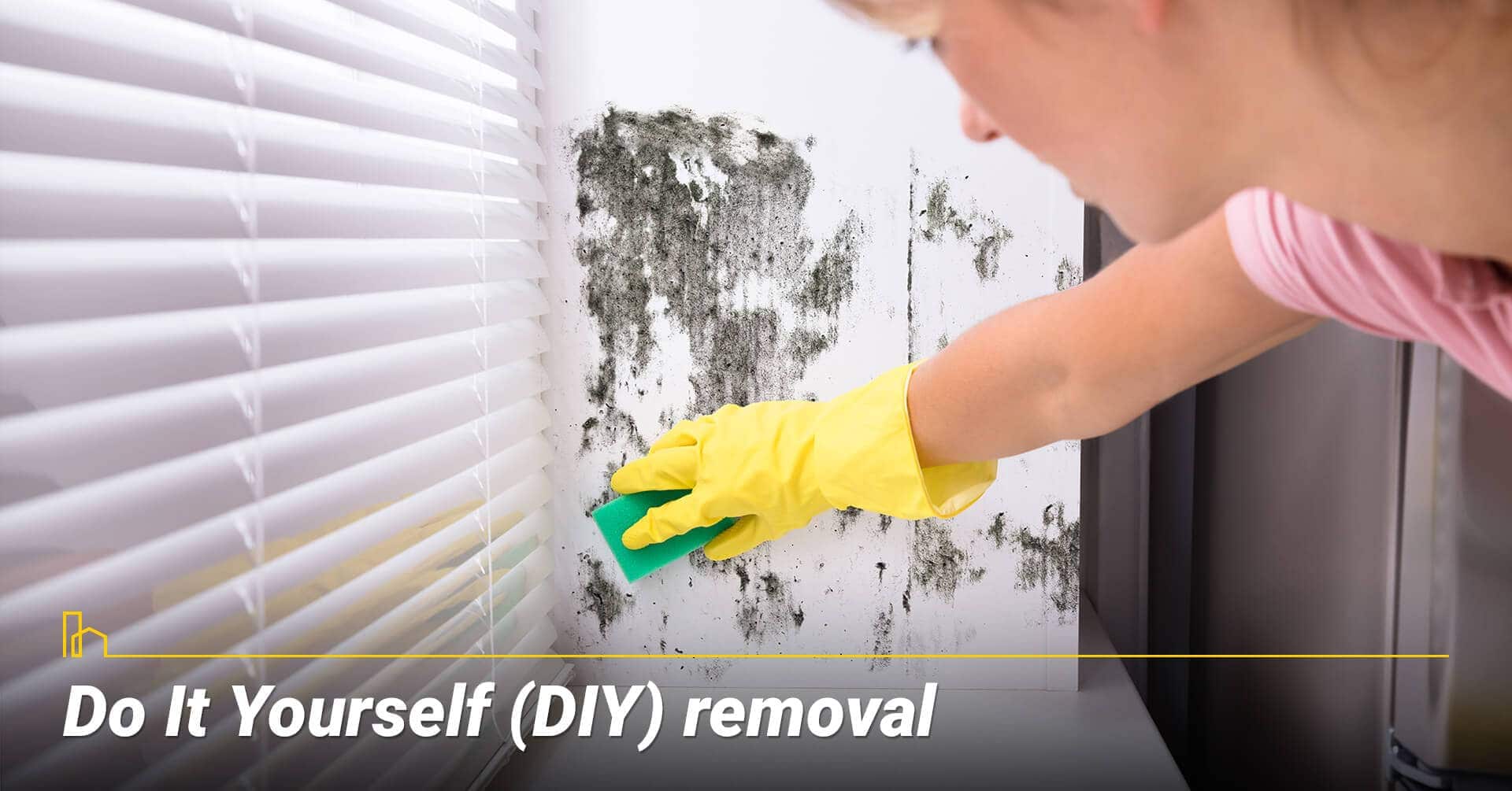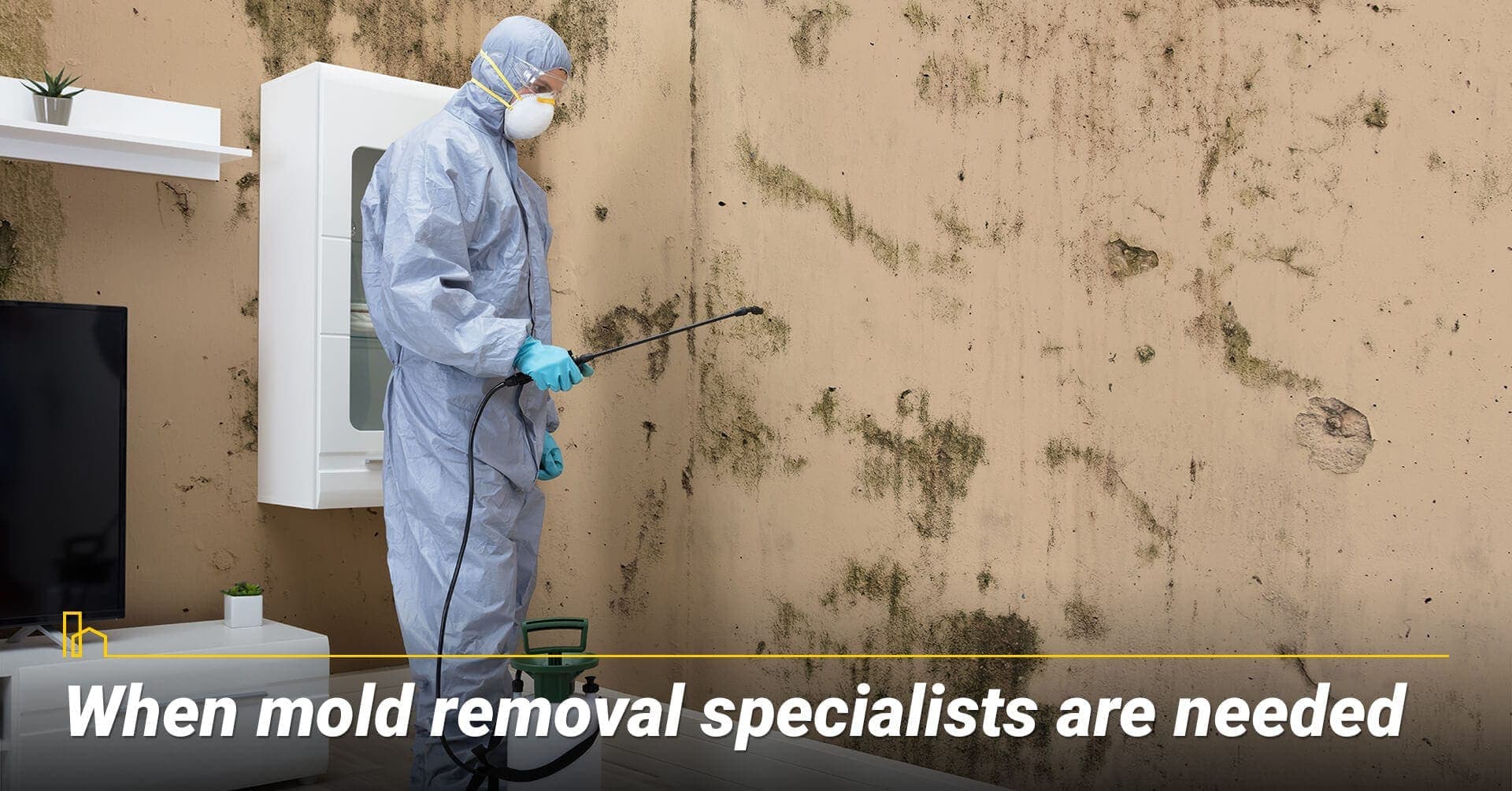How to Deal with a Mold Problem in Your House
- Author:by Judy Olsen
- Category: Home Maintenance , Home Improvement

Mold per se is not bad. It plays an important role in ecology, as it helps in the decomposition process of organic material that produces nutrients for plant life. As long as they form outside, in nature, mold is definitely good.
Mold inside the home, however, is an entirely different story. To say that mold is a nuisance inside your home would be an understatement.
Mold forms in areas that have excessive moisture and poor ventilation. Typically, mold can grow on the floors and walls of bathrooms. Shower curtains are also favorite mold targets. Do you have a water heater or a sump pump in your basement? Then expect its floors to be playing host to mold over time.
When you have a leaking pipe within the walls, mold may also form in its vicinity. Even a leaky roof can lead to mold formation on your ceiling and the wall directly underneath the leak. Here is how to identify and remove mold from your house.
Table of Contents:
The problems that come with mold
Once you confirm the presence of mold in your home, it’s alright to feel a bit upset about it. After all, mold does bring a host of problems.
Mold gives off a musty smell, and it’s often one of the signs that you have a mold infestation at home. It’s even worse if you detect that smell yet you can’t see any mold growth wherever you look. That usually means the mold is behind your walls or ceilings or anywhere out of your sight, which is a much bigger problem than mold you can actually see.
Mold is also incredibly unsightly. Mold formations could look like a fuzzy patch, a slimy spot, or a slick film. And while it can come in colors like green, black, orange, purple, or white, mold’s colorfulness doesn’t do anything to make it less icky. Without a doubt, mold can ruin whatever aesthetics your house had before it reared its ugly head.
Worst of all, inhaling mold spores can make you sick. When inhaled in substantial quantities, mold spores trigger allergic reactions that include coughing, red eyes, sneezing, a skin rash, and a runny nose. Are you asthmatic? Then stay away from mold-contaminated areas, because mold spores can cause breathing difficulties in people with asthma.
Whether you like it or not, you will have to deal with mold. Fortunately, getting rid of mold is possible as long as you do it right.
The 10 Best Places to Live in Oregon
Oregon is a study in contrasts. It has 363 miles of the most breathtaking coastline you’ll encounter anywhere in the world. But it also has dense forests, mountain ranges, and high desert country. Here’re the 10 Best Cities to Live in Oregon…
What you need for DIY mold removal
You can do your own mold removal, especially when you’re dealing with smaller patches of mold. Just make sure that you have all the protection you need if you’re going the DIY route. Working too closely with mold can make you sick, especially if your home is contaminated with black mold, the most toxic of its kind.
Wear rubber gloves, safety goggles, a safety mask or a respirator, and a long-sleeved shirt that you can throw away afterward. You are also going to need an electric fan to dry the area when you’re done.
As for cleaning materials, you are going to need a scrub brush, rags, a scrub brush, a pail, bleach and non-ammonia soap or detergent, and white vinegar.
10 Most Affordable States to Buy a House in 2024
If you have the flexibility to move anywhere in the U.S., where could you buy the cheapest home? After examining data from Zillow and World Population Review. Here’re 10 most affordable States in the South and the Midwest to consider when buying a house in 2024…
Do It Yourself (DIY) removal
Prepare all your materials, put on your protective gear, and you’re all set to begin your DIY removal mission.
You wouldn’t want to disturb mold spores and have them flying through the air, so soak your rag in water and wet the patch of mold for starters.
Using your scrub brush and non-ammonia soap or detergent, brush off vigorously all the mold formations you can see. Once you’re done brushing, get the pail, fill it with a gallon of water, pour 1½ cups of bleach into it and mix well. Soak one of your rags in the solution and dampen the moldy surface with it. Leave the bleach on for 15 minutes, then use the scrub brush again before rinsing the surface thoroughly with water.
Do you still see traces of mold? If so, then do the bleaching thing again. When the results finally satisfy you, then get the fan. If there are still visible traces of mold, repeat the bleaching process until you’re satisfied all mold is gone, then dry the area off using the electric fan.
Mold spores may have hitchhiked onto your clothes the entire time you were wiping and brushing the affected area, so if it’s alright with you, throw them away. If you can’t for whatever reason, then put your clothes inside a plastic bag and bring them straight to the washing machine. Wash your clothes in water fortified by a ¾ cup of white vinegar to kill any fungal hitchhikers.
Recommended for you
When mold removal specialists are needed
Unfortunately, DIY mold removal won’t do if the mold formation is affecting an area that covers more than 10 square feet. The job will then be too big for you, so your only choice would be to call in mold removal professionals. Fortunately for you, it will also be the best decision you can make to address your mold problem at home.
Mold remediation specialists have been trained specifically to get rid of mold colonies in any setting. They are experts not only at locating mold growths wherever they may be in your home, but also at identifying the sources of the moisture that caused the mold to form in the first place.
They will take steps to address that source of moisture—a leaky pipe, a leaking ceiling, water damage, or excessive humidity in the affected area—so that mold won’t return anytime soon once they’re done with their job.
They also have the right chemicals and the tools to use to make sure they kill off the entire mold population in your home.
Most mold removal companies accept insurance, so if your policy covers mold remediation, then waste no time in calling in the specialists. They can rid your home of mold more efficiently, quickly, and permanently than any DIY effort on your part.
The 10 Best Places in the USA to Retire on the Water for Less
The popularity of the waterfront can mean high housing costs and consumer prices. Luckily, for those willing to look past the likes of Malibu and Venice Beach, there are plenty of scenic spots along the country’s lakes and oceans where retirees can make a nice home even with a reduced…






































































